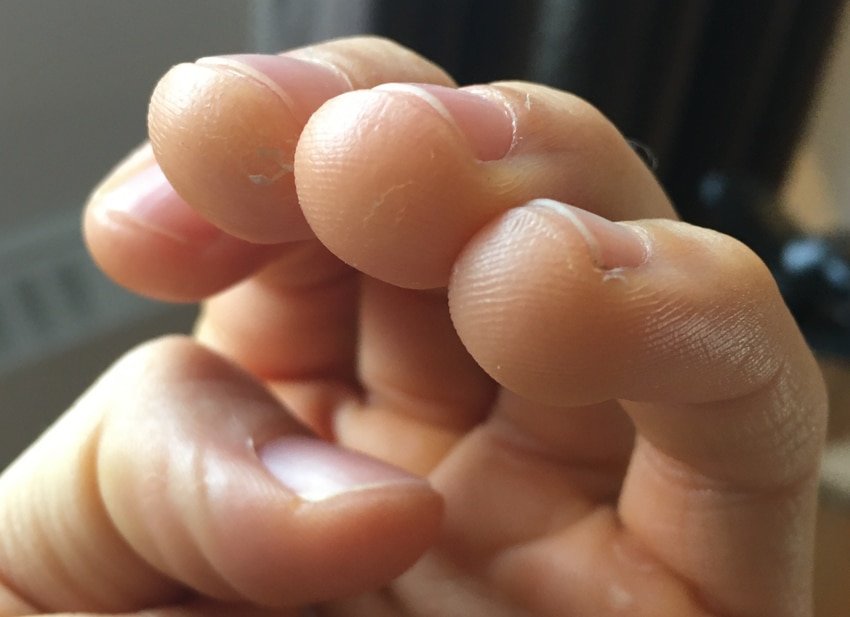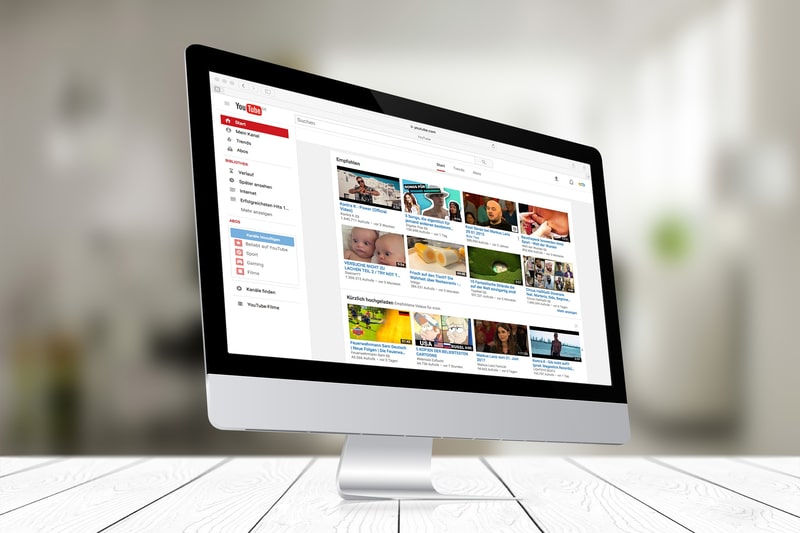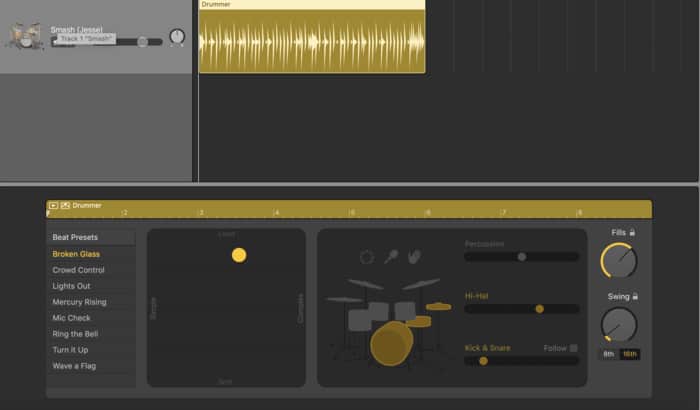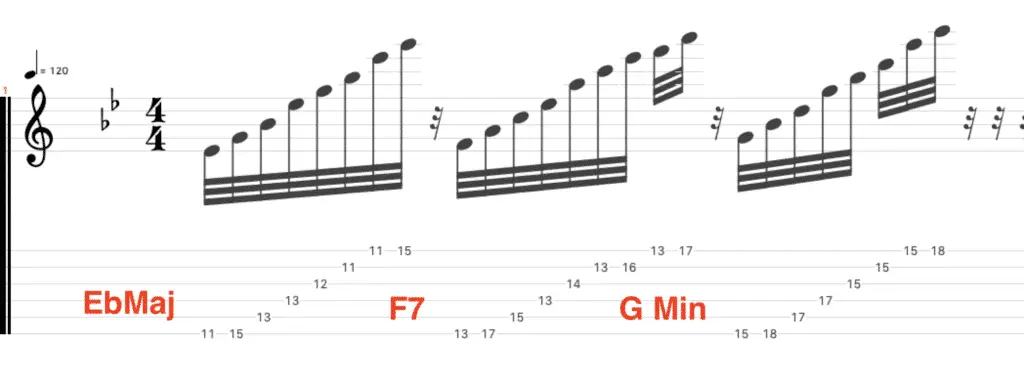A commonly asked question about guitar playing from beginners is whether or not it’s difficult to learn. Like most things, it’s fairly challenging at the start but you quickly get used to it. The number one thing that really propels you to learn, however, is you actually enjoy it.
This is the primary reason why I was able to learn a lot quicker than when I learned to play the piano. That said, there are some other reasons why it’s fairly easy.
Learning to play the guitar isn’t that hard because
- It’s not hard if you enjoy it.
- You get used to finger-pain and calluses
- The internet Is filled with free lessons and tutorials
- It isn’t physically demanding
- The digital audio workstation
- Tablature makes learning songs simple
Relative to some of the more challenging tasks in life, learning to play the guitar is not that difficult. As long as you have the right teacher, a work ethic, and the ability to be consistent, a lot of progress can be made within a year’s time. In this article, I’m going to explore seven different reasons why playing the guitar is not as hard as you think.
1) It’s Not Hard If You Enjoy It
Like many other things in life, if a person truly enjoys what they’re doing, sticking in the game for the long-term is a lot easier, because those moments where they feel like giving up are easier to push through.
When a person truly loves what they’re up to, it often doesn’t feel like work.
With that said, however, there will always be moments, despite how much you like it, where you may feel frustrated, eager to give up, or just bored with what you’re currently studying.
Giving you an example, when I memorized all of the major key signatures and the major scales in seven different positions, it wasn’t that hard at all, simply because I enjoyed doing it every day.
What may seem like a daunting task at the time ends up being somewhat enjoyable, even if there are moments where it’s not quite as fun as you originally envisioned.
In my experience, the frustrating moments where I wonder what I’m doing are usually a consequence of having too much on my plate, in general, rather than anything to do with the instrument.

Another reason why you may get frustrated with your progress is due to insecurity: insecurity that what you’re learning may not be worth the effort at the end of the day.
This is where time-management skills and proper lessons from a solid teacher come into play. Truthfully, a regular person can only focus on so many goals at a time, usually around 2, and in some cases, 3.
If you find yourself frustrated or stressed out about playing the instrument, ask yourself how many things you currently have on your plate and whether your current schedule has room for learning a new skill.
For instance, if your number one priority at the moment is getting good grades in school, guitar should be your second goal, and if you have extra time, you can hit the gym, assuming you’ve done the work related to the first two tasks for the day.
Another point worth mentioning is the importance of playing music you really enjoy. A lot of people out there want to learn how to play an instrument, and typically, I’m able to discern whether they’ll continue or not just by the music they listen to.
If you’re a massive rap fan, and it’s the only genre of music you listen to, finding the inspiration and motivation to play every day is going to be a challenge.
It’s best to listen to music that at least has guitar playing in it, even better yet, where the guitar is the primary instrument in the song, for instance, in a John Mayer song, or anything from Metallica and other metal bands.
2) You Get Used To Finger Pain and Calluses
Surprisingly, finger pain and calluses are a common excuse for people to quit playing the guitar.
Unfortunately, what they don’t understand is that finger pain typically goes away one month after repeated playing, sometimes even two weeks, due to the buildup of dead tissue on the ends of your fingers.
Building up the calluses on the ends of your fretting hand, regardless of which one it is, is an important part of the process of your body acclimating to the pressure you’re putting on it.

It’s simply a part of the learning process, similar to the way your body gets sore from hitting the gym.
If you want to give up your gym habit due to muscle soreness the following day, then maybe going to the gym isn’t for you. The same thing can be said for the guitar.
Dealing with those 2-4 weeks where your fingers hurt is all it takes, and then after that, it’s smooth sailing.
For a long-time player, finger calluses and soreness are not even worth thinking about.
For instance, when I first started working on the content for Traveling Guitarist, I was honestly surprised to hear how many people were asking about finger pain and calluses. I hadn’t thought about this issue in years.
A tip for building up calluses: If your fingers get sore after a day or two of playing, maybe it’s a good idea to take a break until the finger pain goes away. Just a 1-2 day break is all that’s necessary.
You’ll find that during that healing process, the fingertips will harden and you can go back to playing the instrument without any trouble. In fact, it’ll feel much better because there is now a barrier between the nerves in your fingers and the strings.
3) The Internet Is Filled with Lessons, Tutorials, and Guides
One of the greatest aspects of being alive in 2020 is the internet. The internet has given us access to all kinds of amazing information. Admittedly, some of it is less than adequate, but much of it is quite good.

There are so many resources online for learning how to play the instrument, including guitar tabs on Ultimate Guitar’s website, FretJam, YouTube, and so on. There is no limit to what’s on the internet, especially if you’re willing to spend at least a little bit of money.
Additionally, it’s entirely possible to get lessons from some of the best players in the industry through Skype and other communication platforms. There are also different kinds of content for everyone, including YouTube videos for more visual learners, and also text-guides on various websites.
4) Learning to Play Guitar Isn’t That Physically Demanding
By this, I mean that in comparison to something like Muay Thai, there isn’t much of a risk for injury and other physical problems. In the case of sports, many things can happen, including injury, some of which even end up causing permanent damage.

With the guitar, however, this isn’t the case, because the process isn’t exposing you to any situations where you might get hurt. Although, I’m sure people have gotten hurt before during live shows. Like many other things, there is always an exception to the rule.
Other than finger calluses and finger pain in the beginning stage of learning to play the instrument, there isn’t much to worry about, except for pricking your fingers at the end of the strings poking out of the tuning posts. Other than that, there isn’t much else.
5) We Have YouTube Now
I already mentioned YouTube in passing in #3, however, I believe talking about YouTube on its own is worth doing because YouTube has to be one of the greatest resources available for people who are looking to learn a new skill.
When I started playing the guitar in the early 2000s, YouTube didn’t even exist, and all of the information you had to learn on the guitar was either through a teacher in real-life, books that cost between $20 and $40, or text guides on rudimentary blogs.

Blog content from the early 2000s was not nearly as good as it is now.
For learning music theory and how to play guitar, I suggest checking out Ben Eller on YouTube as well as Signals Music Studio. Both of these channels are fantastic for music theory lessons, tips, tricks, and other helpful information.
You can’t mention music and YouTube together without name-dropping Rick Beato, as well, who now has over 1 million subscribers. Rick Beato is arguably one of the best YouTubers when it comes to music theory lessons and analysis.
Many of his videos go in-depth on difficult concepts, however, he’s able to break them down in such a way where it’s easy to understand.
6) The Evolution of the Digital Audio Workstation
This is another one of those technological advancements that have essentially democratized music-making. In 2020, it’s easy to download a software program such as Garageband and get started with making music right away.
Not getting into Garageband and other DAWs immediately is one of the big mistakes that I made as a guitar player.
Garageband, created by Logic Audio and released by Apple in 2004, is one of the best beginner DAWs for people just getting started in the world of music production.

With just a few pieces of gear, it’s now possible to record your guitar directly into your computer without spending thousands of dollars.
At one point in time, you actually had to use a microphone up to your guitar’s amplifier, record it with a tape machine, and anything that needed to be edited had to be done manually, or over-dubbed in a way that was time-consuming and costly.
However, the popularity of the DAW has made music-making a lot easier for beginner musicians, and it’s one of the reasons why everyone wants to be a musician, DJ, rapper or employed in music in some form or another.
It’s because it’s possible now to get started without costing a fortune.
If you own an iPhone or a Mac computer, I suggest downloading Garageband and getting started with it right away. Don’t make the mistake that I made and focus solely on playing the guitar. Learn how to use a DAW on a basic level as well.
Check out A Simple Beginner’s Tutorial for Garageband on my other site, Producer Society.
If you want to get started with recording guitar parts in Garageband, you really only need one piece of gear: an audio interface.
A good one to get is the iRig HD 2 from IKMultimedia, which is a company that specializes in crafting small audio interfaces that are great for taking on the road.
If you want to record vocals and guitar, check out the Focusrite Scarlett 2i2.
Plug-ins are also worth mentioning. In case you don’t know, digital audio work stations allow you to download mini software programs that can perform a variety of functions, including compression, EQ, amp simulators, reverb, and so on and so forth.
At one point in time, you actually had to go out and buy these pieces of gear for hundreds of dollars, but now they’re easy to access simply through a download.
Admittedly, they’re not as good as the analog equipment, but it’s only a matter of time until digital is better than analog. Many people would debate this point, however.
7) Tablature Makes Learning Songs Simple
Learning to read modern staff notation is one of the great fears of people who want to learn how to play music. Modern staff notation is the Western system of communicating and expressing notes to other musicians. Most people recognize things like the treble and bass clef, as well as the quarter-note.
Truthfully, while it’s great to learn how to read music, it’s not 100% necessary for learning how to play guitar. In fact, some of the most prolific guitar players of all time didn’t know how to read music, including Jimi Hendrix and Eddie Van Halen.

Tablature is a numerical system, divided up into grid-lines, where each number represents the fret on the guitar and the grid-lines represent the strings.
This system makes learning how to play the guitar extremely simple, and it’s definitely worth learning if you want to learn how to play the instrument.
Additionally, one of the great aspects of this communication system is that it’s easy to use. Thankfully, a by-product of this is that people have figured out how to play the most popular songs by ear, and then done the rest of us a favor and uploaded the tablature to sites like Ultimate-Guitar.
YouTube Video
Conclusion
All-in-all, learning to play the guitar isn’t that difficult in comparison to other things in life, especially nowadays that the internet is in full swing and we all have access to this information.

 Written By :
Written By :